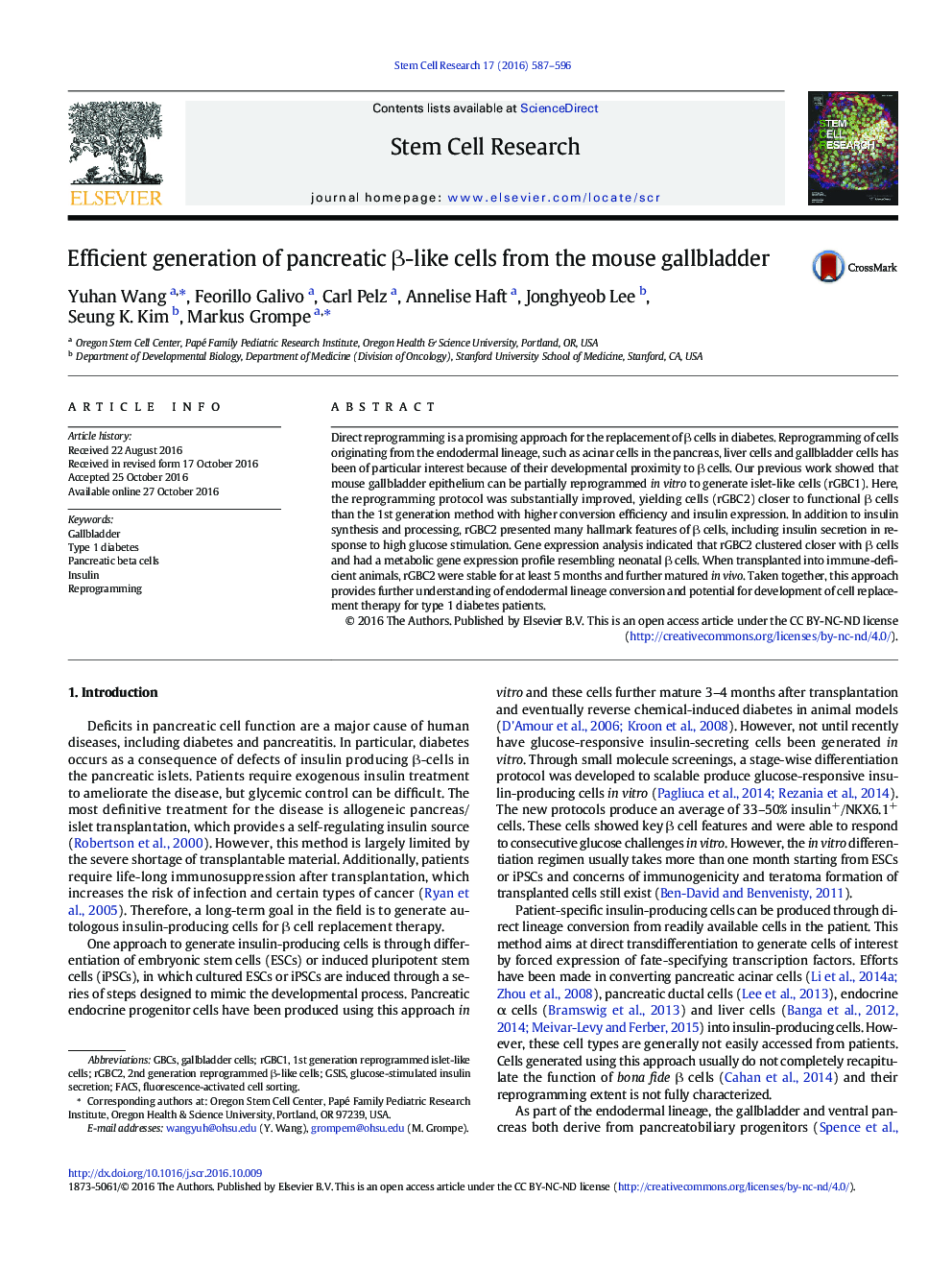| Article ID | Journal | Published Year | Pages | File Type |
|---|---|---|---|---|
| 5522760 | Stem Cell Research | 2016 | 10 Pages |
â¢Approximately 20-30% of gallbladder cells can be reprogrammed into insulin producing β-like cells in vitro.â¢rGBC2 synthesize, process and secrete insulin and present glucose responsiveness.â¢Transcriptome analysis showed that rGBC2 clustered closer with pancreatic β cells.â¢rGBC2 can engraft and persist in immune-deficient animals, during which they further mature by activating pancreatic endocrine factors such as Nkx6.1.
Direct reprogramming is a promising approach for the replacement of β cells in diabetes. Reprogramming of cells originating from the endodermal lineage, such as acinar cells in the pancreas, liver cells and gallbladder cells has been of particular interest because of their developmental proximity to β cells. Our previous work showed that mouse gallbladder epithelium can be partially reprogrammed in vitro to generate islet-like cells (rGBC1). Here, the reprogramming protocol was substantially improved, yielding cells (rGBC2) closer to functional β cells than the 1st generation method with higher conversion efficiency and insulin expression. In addition to insulin synthesis and processing, rGBC2 presented many hallmark features of β cells, including insulin secretion in response to high glucose stimulation. Gene expression analysis indicated that rGBC2 clustered closer with β cells and had a metabolic gene expression profile resembling neonatal β cells. When transplanted into immune-deficient animals, rGBC2 were stable for at least 5 months and further matured in vivo. Taken together, this approach provides further understanding of endodermal lineage conversion and potential for development of cell replacement therapy for type 1 diabetes patients.
